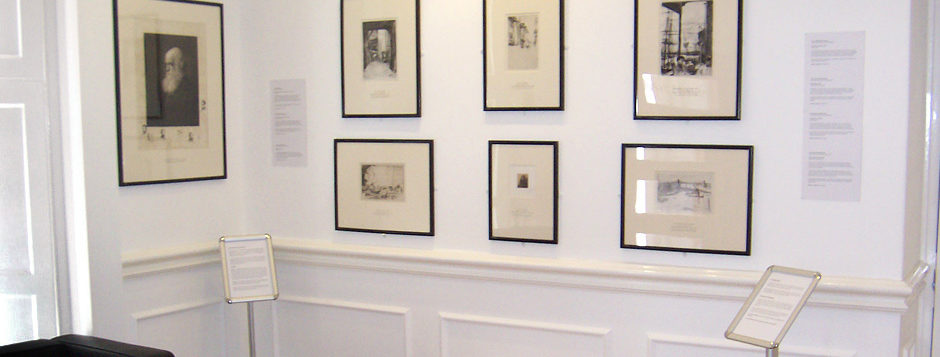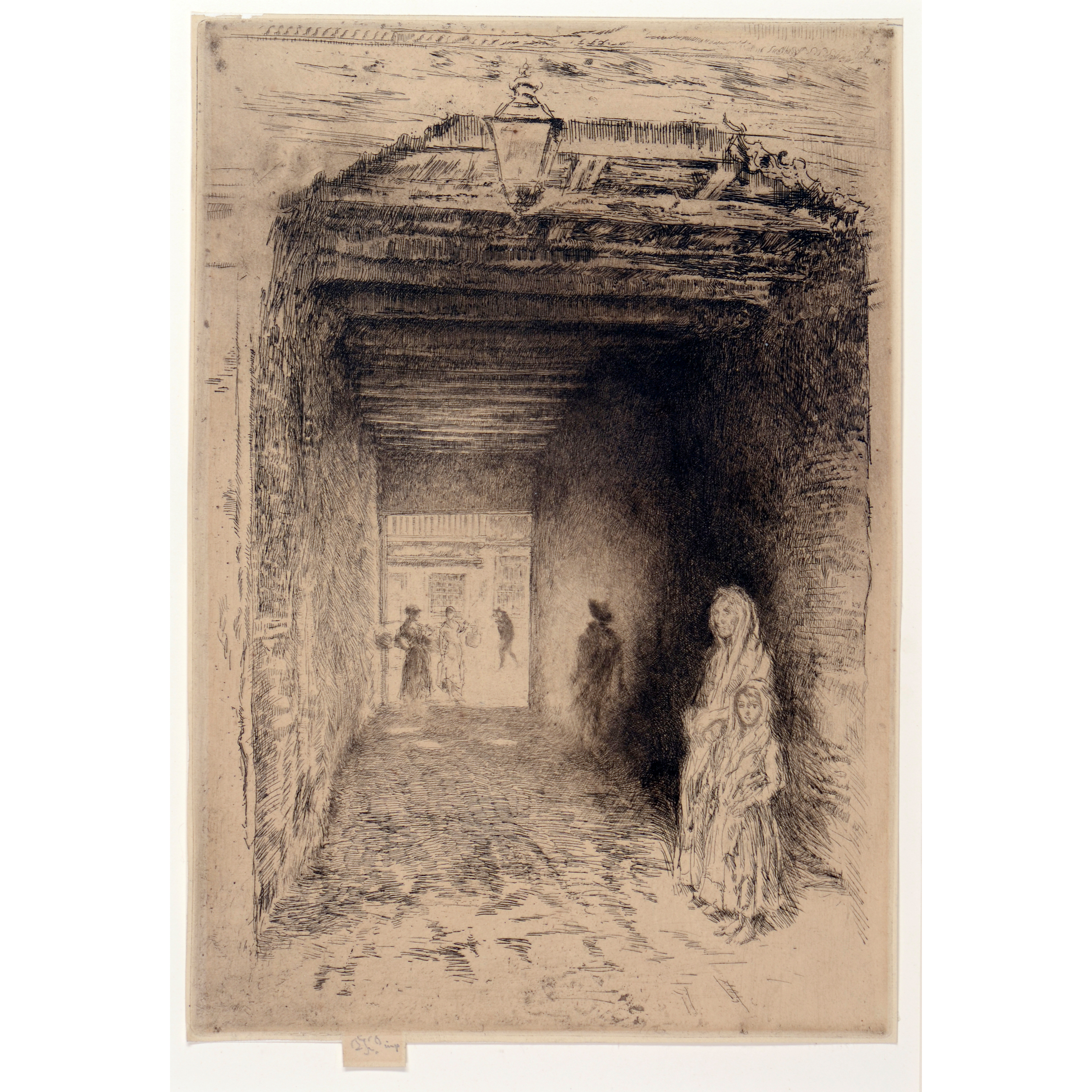Dundee Art Galleries & Museum: 272-1987-313
Artist: Whistler, James Abbott McNeill
Date: 1879/80
State: 12/17
Size: 30.5 x 21.3 cm
Medium: Etching and Drypoint
| Details | Etching and drypoint. Black ink on buff coloured laid paper. Butterfly ‘imp.’ of 1886 on tab. Over fifty impressions are known. |
| Description | Detailed information concerning the Whistler prints held in The Orchar Collection comes from the University of Glasgow’s excellent Whistler Etchings Project. (Margaret F. MacDonald, Grischka Petri, Meg Hausberg, and Joanna Meacock, James McNeill Whistler: The Etchings, a catalogue raisonné, University of Glasgow, 2012, on-line website at http://etchings.arts.gla.ac.uk). Considerable thanks are due to Professor MacDonald for allowing us to use their research in these entries.
The location is the Sotoportego e Corte de le Carozze. The subject was sketched in Venice where Whistler stayed from September 1879 through to November 1880. It seems likely that it was started in the autumn of 1879 as Whistler stayed close to the location. Commissioned by the Fine Art Society in 1879 for Venice, a Series of Twelve Etchings (otherwise known as the ‘First Venice Set’). It was published in Venice in 1880. Whistler accepted the commission as he had recently been made bankrupt due to his recent libel case against John Ruskin. In 1877 the Ruskin, the most influential art critic of the Victorian period, in a review of works shown at the Grosvenor Gallery, London, criticised Whistler’s painting Nocturne in Black and Gold: The Falling Rocket, 1875 (Detroit Institute of Arts, Detroit) stating that ‘I have seen, and heard, much of Cockney impudence before now; but never expected to hear a coxcomb ask two hundred guineas for flinging a pot of paint in the public’s face.’ Whistler responded by taking Ruskin to court for libel, justifying his price; ‘I ask it for the knowledge I have gained in the work of a lifetime.’ A report of the case was printed in The Daily News on 26th November 1878. Whistler won his case but was only awarded a farthing in damages without cost. For many years after he referred to the painting as The Pot of Paint. |
| Catalogue Entry |
|
| Other Collections (UK) |
See the Whistler Etchings Project for a list of impressions. |
| References |
|

